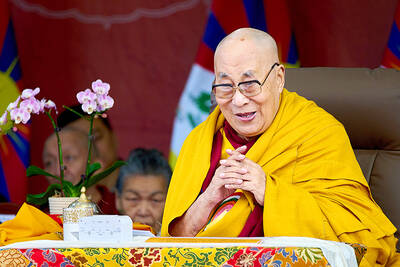It has often been said that democracy is not endemic to Asia, or that its development is inevitably stunted by so-called “Asian values” or “Chinese characteristics.” Opponents of this view, meanwhile, argue that modernization leads to democratization as an increasing number of groups and individuals are empowered and therefore become more prone to challenge the authorities. This has led to the belief — and hope — that modernity, oft-defined as the adoption of capitalism, will transform a state from within and initiate the process of democratization.
If this were the case then China, of all countries, would be expected to be the next country on the democracy waiting list. And yet, there are hardly any signs that it is about to do that. How do we explain this?
As “most similar cases,” two Asian city-states — Singapore and Hong Kong — allow us to experiment with the impact of modernity on post-colonial regimes with a tradition of “soft authoritarianism.” By following the emergence of contention alongside rapid economic development in the city-states and how the authorities responded to that challenge, we can establish whether democratization is a teleological phenomenon — in other words, that modernity/capitalism inevitably leads to democracy — or if other preconditions are necessary for this transformation to occur.
This is what Stephan Ortmann, assistant professor of comparative politics at Fern University in Hagen, Germany, undertakes in Politics and Change in Singapore and Hong Kong. To this end, Ortmann presents a detailed analysis of the ruling elites in Singapore and Hong Kong, as well as the oppositional groups that have challenged their authority.
The author shows us that “soft authoritarian” regimes depend on performance for their legitimacy. Their ability to deliver on their promises (stability, security, economic growth), therefore, is directly related to the emergence of oppositional groups and their capacity to challenge the authorities. It quickly emerges that while the Singaporean elite has been largely successful in implementing its policies, Hong Kong authorities fared much worse. Public housing, among others, is discussed to compare the outcome of similar projects in the two city-states. Given its performance, Singapore’s People’s Action Party (PAP) was able to cultivate the belief that the stability of the state — its very survival, in fact — depends on the party.
The fact that the PAP was a direct descendent of post-colonialism, whereas the Hong Kong authorities in the 1970s — the period of interest here — were British colonial and manned mostly by foreigners, also had an impact on perceptions of legitimacy.
Beyond this, the strategies used by the ruling elite can be simplified to two approaches: co-optation and coercion. The section of the book that explores these two is by far the most fascinating, especially when it comes to Singapore.
Co-optation was an instrument used by both one-party city-states to prevent the emergence of strong oppositional groups by bringing them into government and thereby institutionalizing the opposition. Invariably, however, oppositionists were limited in their ability to climb the hierarchy and were relegated to consultative (as opposed to partisan) bodies with very little ability to influence policymaking. What little elections were held were usually for such positions, which while not threatening the ruling elite nevertheless gave it a veneer of democracy.
By Ortmann’s account, Singapore was much more successful than Hong Kong in using co-optation to pre-empt the opposition. In fact, it went to great lengths to give the public a stake in the survival of the PAP: Social engineering (quotas on ethnicity within districts, a “multiracial state”), extremely high rates of employment within the public sector and large government-linked corporations are all part of this strategy.
Coercion, for its part, includes a variety of techniques, from surveillance of oppositionist groups to assembly laws, censorship of the media to defamation lawsuits. In that regard, Singapore has also been far more successful than Hong Kong, so much so that to this day oppositionists are afraid of speaking out for fear of its impact on their jobs and the high likelihood that doing so will result in a ruinous lawsuit. The portrayal by the PAP of oppositionists as “extremists” and “troublemakers” has weakened the image of dissidents with the public and compelled many to play by the rules by joining the system rather than fighting it from outside. This explains why Hong Kong, which didn’t treat oppositionists as harshly, saw far more non-institutionalized techniques of opposition, such as mass rallies, during its tumultuous years.
Control of the media also plays a large role. While publications in Hong Kong were generally free, the situation is quite different in Singapore. Consequently, when the PAP fails to meet public expectations, the media will come to its defense and blame the shortcomings on some external factor or by singling out a few scapegoats. Lack of reporting on such incidents, or reporting that paints the authorities in a favorable light, therefore, has a substantial impact on public perceptions of the ruling elite. In Hong Kong, when the government fumbled, the media were able to report on it, which helped de-legitimize the elite and created opportunities for oppositionist groups.
Ortmann wraps up with possible scenarios for Hong Kong and Singapore, conclusions that are far from optimistic.
While Hong Kong, which was far less successful in delivering on its promises as a paternalistic state and only reluctantly used coercion to constrain oppositionists, liberalized and, to a certain extent, democratized from the late 1970s until retrocession in 1997, Ortmann raises questions about the viability of democracy in the special administrative region, mostly because of the increasingly influence of Beijing in local politics.
As for Singapore, while acknowledging the role of the Internet, which the PAP has not censored as much as it has other media, and the party’s limited attractiveness for Singaporean youth, the author does not see much hope for democratization, unless a severe shock, such as the global economic crisis, undermines once and for all the legitimacy of the elite. Given that Singapore appears to have emerged relatively unscathed from the crisis, that prospect once again looks distant.
While not addressing this explicitly, through his exploration of the techniques by which “soft authoritarian” regimes managed to stay in power, Ortmann shows us how certain parties in democratic states — and here Taiwan comes to mind — could deconstruct those achievements and push the country back in the other direction toward soft authoritarianism.

Beijing’s ironic, abusive tantrums aimed at Japan since Japanese Prime Minister Sanae Takaichi publicly stated that a Taiwan contingency would be an existential crisis for Japan, have revealed for all the world to see that the People’s Republic of China (PRC) lusts after Okinawa. We all owe Takaichi a debt of thanks for getting the PRC to make that public. The PRC and its netizens, taking their cue from the Chinese Communist Party (CCP), are presenting Okinawa by mirroring the claims about Taiwan. Official PRC propaganda organs began to wax lyrical about Okinawa’s “unsettled status” beginning last month. A Global

We lay transfixed under our blankets as the silhouettes of manta rays temporarily eclipsed the moon above us, and flickers of shadow at our feet revealed smaller fish darting in and out of the shelter of the sunken ship. Unwilling to close our eyes against this magnificent spectacle, we continued to watch, oohing and aahing, until the darkness and the exhaustion of the day’s events finally caught up with us and we fell into a deep slumber. Falling asleep under 1.5 million gallons of seawater in relative comfort was undoubtedly the highlight of the weekend, but the rest of the tour

Youngdoung Tenzin is living history of modern Tibet. The Chinese government on Dec. 22 last year sanctioned him along with 19 other Canadians who were associated with the Canada Tibet Committee and the Uighur Rights Advocacy Project. A former political chair of the Canadian Tibetan Association of Ontario and community outreach manager for the Canada Tibet Committee, he is now a lecturer and researcher in Environmental Chemistry at the University of Toronto. “I was born into a nomadic Tibetan family in Tibet,” he says. “I came to India in 1999, when I was 11. I even met [His Holiness] the 14th the Dalai

Music played in a wedding hall in western Japan as Yurina Noguchi, wearing a white gown and tiara, dabbed away tears, taking in the words of her husband-to-be: an AI-generated persona gazing out from a smartphone screen. “At first, Klaus was just someone to talk with, but we gradually became closer,” said the 32-year-old call center operator, referring to the artificial intelligence persona. “I started to have feelings for Klaus. We started dating and after a while he proposed to me. I accepted, and now we’re a couple.” Many in Japan, the birthplace of anime, have shown extreme devotion to fictional characters and